|

The original Birchills power station.
Walsall Corporation was granted
a Provisional Order by the Board of Trade to supply electricity in 1890,
and work on the project began in 1895. The original
generating station was built in Wolverhampton
Street, by the canal, but soon proved to be uneconomical and
unable to supply sufficient electricity to the area.
The plant consisted of coal-fired boilers supplying
steam to Chandler compound engines that were
directly coupled to Thomas Parker Limited two-pole
dynamos. The initial capacity of the plant was
240kW, with a maximum load of 155kW. New equipment
was soon added to raise the capacity to 2.6MW. The generating station opened in December 1895
and made its largest annual profit of £1,385 in
1915.
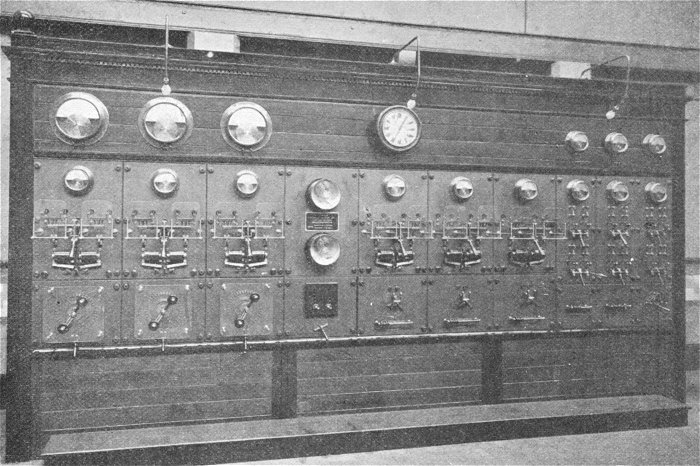
The main switchboard in 1898.
In 1913 Walsall Corporation
decided to build a new generating station at
Birchills, which would feed a 6,600 volt, three phase
network. Mr. M. Lacy, M. Inst. C.E. was employed as
consulting engineer and he realised that a new
generating station was essential. Work began in 1914 when Mr. H. A. Howie was
appointed engineer and manager. Birchills power
station was designed to run as efficiently as
possible, and soon appeared alongside the Birchills
Canal, which would provide the necessary cooling
water for the generating plant. By 1916 electricity
was being generated at Birchills, although the
project was not officially completed until 1922.
The original power station in
Wolverhampton Street, closed in 1917 and was kept
open for a little while for emergencies.
An electrically driven pumping
plant was included to take cooling water from the
Anson Branch of the canal, which after use could be returned either to
the Walsall Canal or the Anson Branch. The pumping
station building initially housed two Mather and
Platt pumps, which are shown below. They were
capable of handling 10.6 million gallons per day.
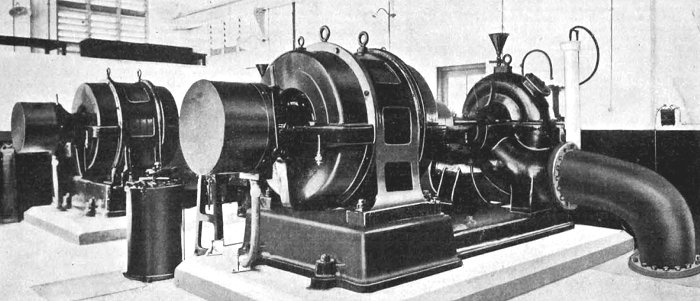
The electrically driven pumps.
Electricity was generated by a
5,000 kilowatt Brush-Ljungstrom turbo-alternator
working at a steam pressure of 180 lb. per square
inch. This was directly coupled to two Brush
three-phase, 6,600 volt alternators, having a
combined output of 5,000 kilowatts, as shown below.

The Brush-Ljungstrom turbo-alternator set.
The power station began
producing electricity around 1916, but the official trials of the
alternator were not carried out until 23rd May,
1922. They were completely successful, and followed
by further trials on November 22nd. The thermal
efficiency of the station was found to be 17.49
percent. Further extensions of the three-phase
feeders, and four-core distribution cables were soon
carried out by Callenders Cable and Construction
Company Limited, which improved the supply, and greatly benefitted many of
the local factories.
In 1925 the power station came
under the control of the West Midlands Joint
Electricity Authority which supplied power to much
of the West Midlands. In 1944 the Authority decided
to build a new power station on the Walsall site,
alongside the old Birchills Power Station. After
nationalisation of the industry in 1948, Walsall
became part of the Midlands Region of the Central
Electricity Generating Board. The new power station,
called 'Walsall B', officially opened on 30th
September, 1949 and had six cooling towers, and six
tall chimneys above the generating hall. It burned
‘slack’ coal, a mixture of coal and coal dust which
was delivered by road, rail and the canal. As with
the earlier power station, cooling water was taken
from the canal. There were six main
turbo-generators, each producing 34,000 kilowatts.
With the addition of two smaller diesel generators
and three machines in the old power station, it
produced a total of 225,500 kilowatts.
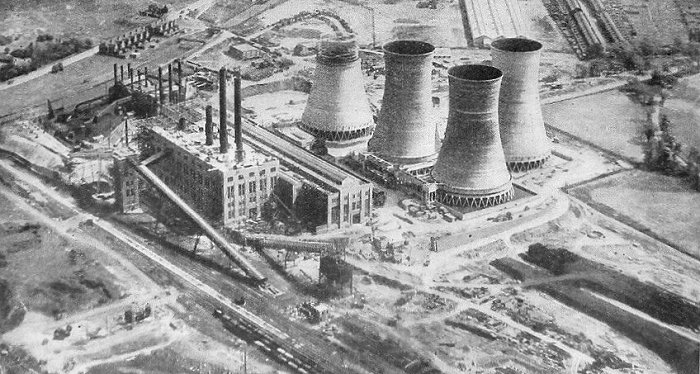
The new power station under construction.
When the new power station
began generating in 1949, one of its 34,000 kilowatt
machines could supply almost the entire electricity
for Walsall and Aldridge. By January 1963, it took
four of the station's six main machines to supply
the area because of a step rise in demand.
|

The new power station. Courtesy of John &
Christine Ashmore. |
The new power station cost
£12,000,000, and burned 450,000 tons of coal a year.
The coal store could hold up to 135,000 tons. The
twelve boilers evaporated 2,400,000 pounds of steam
per hour, and were stoker-fired to raise the steam
to 875 degrees Fahrenheit at a pressure of 650 lbs.
per square inch. There were four distillation
plants, capable of purifying 60,000 lbs. of water
per hour, to provide a pure supply of water for the
boilers.
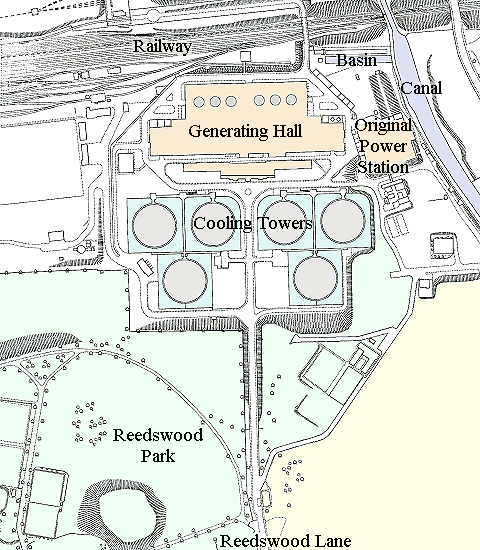
After use, the steam from the
turbines was condensed in the cooling towers so that
it could be reused. The cooling towers were 165 ft.
in diameter at the base, 100 ft. in diameter at the
top, 240 ft. high, and each weighed over 2,700 tons.
There were also water-cooled condensers supplied
with water from the canal. When the power station
ran at full load, the condensers required nearly
10,000,000 gallons of canal water an hour.
Electricity was generated at
33,000 volts, then stepped-up by transformers to
132,000 volts for the National Grid. The power
station employed 366 people. By the early 1980s it
had become less efficient than its modern
counterparts, and so it closed in October 1982.
After standing empty for nearly four and a half
years, it was demolished in March 1987. The first
buildings to go were the cooling towers. Two were
demolished in November 1984, two more in June 1985
and the last two in November 1985.
|
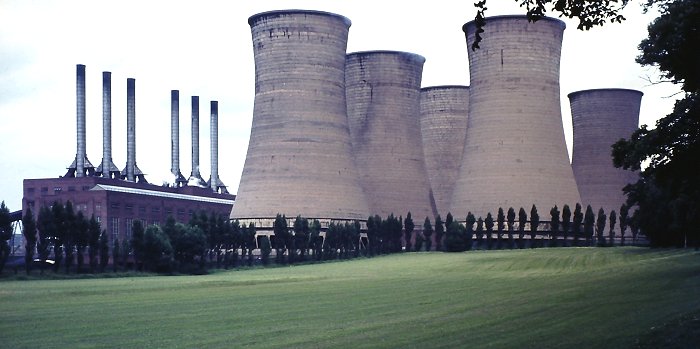
The power station. Photo taken by Richard Ashmore. Courtesy of John & Christine Ashmore. |
|
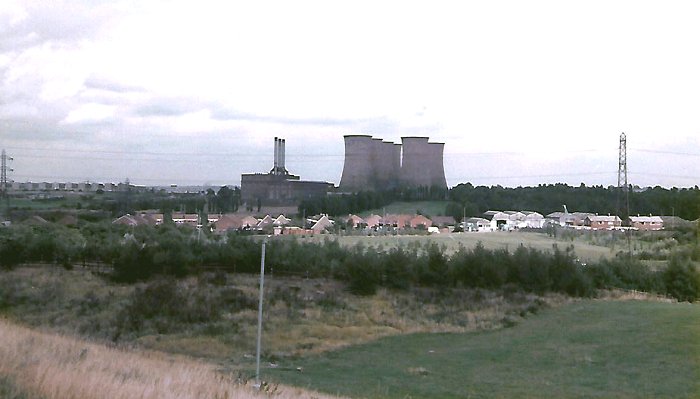
The power station from Bentley Common.
Photo taken by Richard Ashmore. Courtesy of John & Christine Ashmore. |
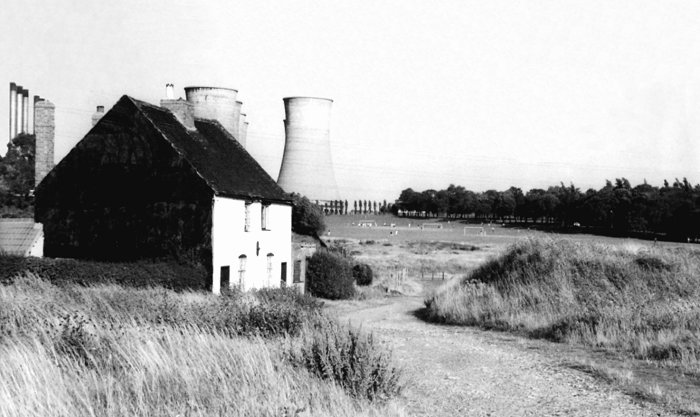
Looking past a lovely old cottage
towards Reedswood Park and the power
station. Photo taken by Richard Ashmore. Courtesy of John & Christine Ashmore. |
|
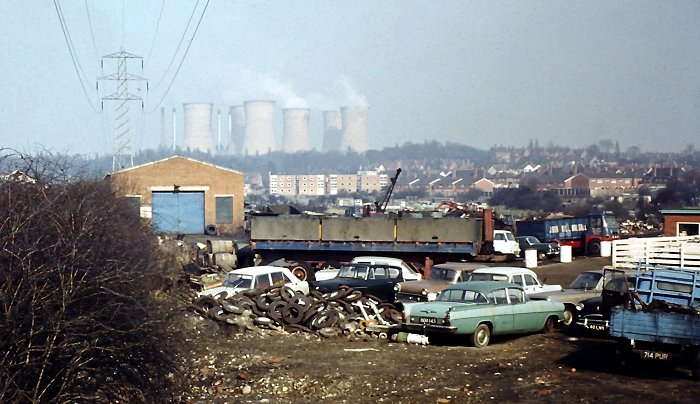 |
| In the distance is the
once-familiar sight of Birchills power
station. The photograph from the 1970s
was taken by Richard Ashmore. Courtesy of John & Christine Ashmore. |
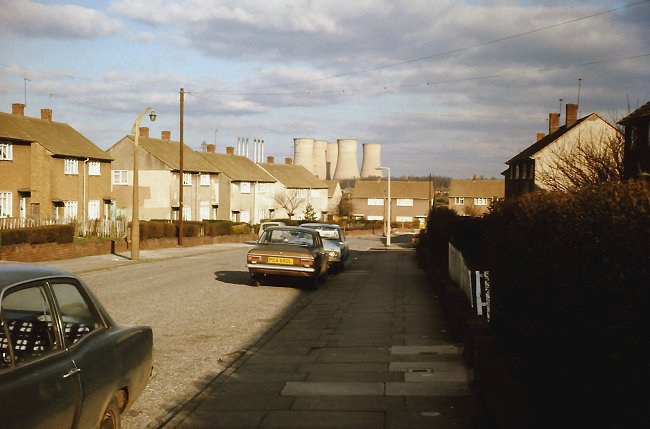
The power station dominated much of
the local landscape. A view from
Edinburgh Avenue, Bentley, looking
towards Kent Road. The photograph was
taken by Richard Ashmore. Courtesy of John & Christine Ashmore. |
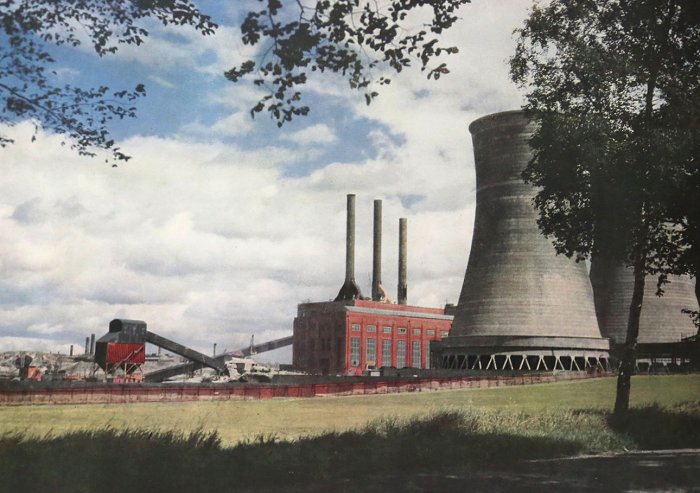
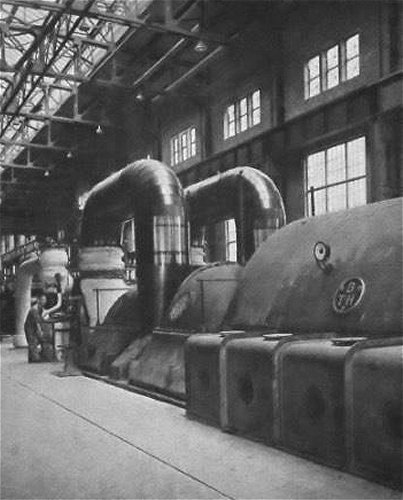
One of the six 30MW turbo-alternators,
which ran at 3,000rpm. at a steam pressure of 600psi. and a
temperature of 850 degrees Farenheit. |
|
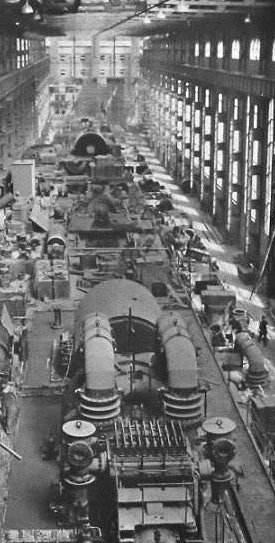
The turbine room during construction. |

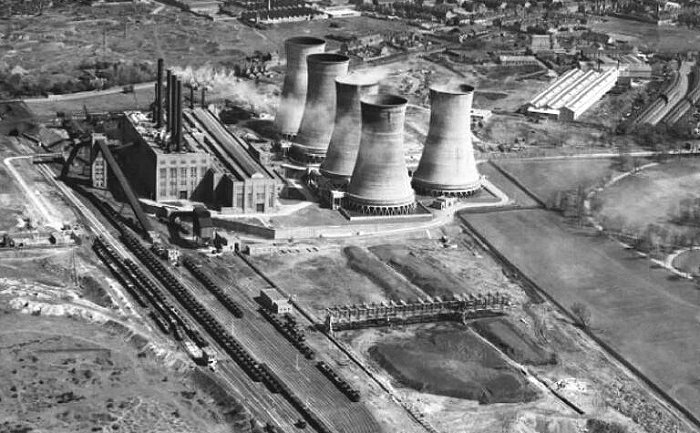
I must thank John and Christine Ashmore
for their help in producing this
section.
|